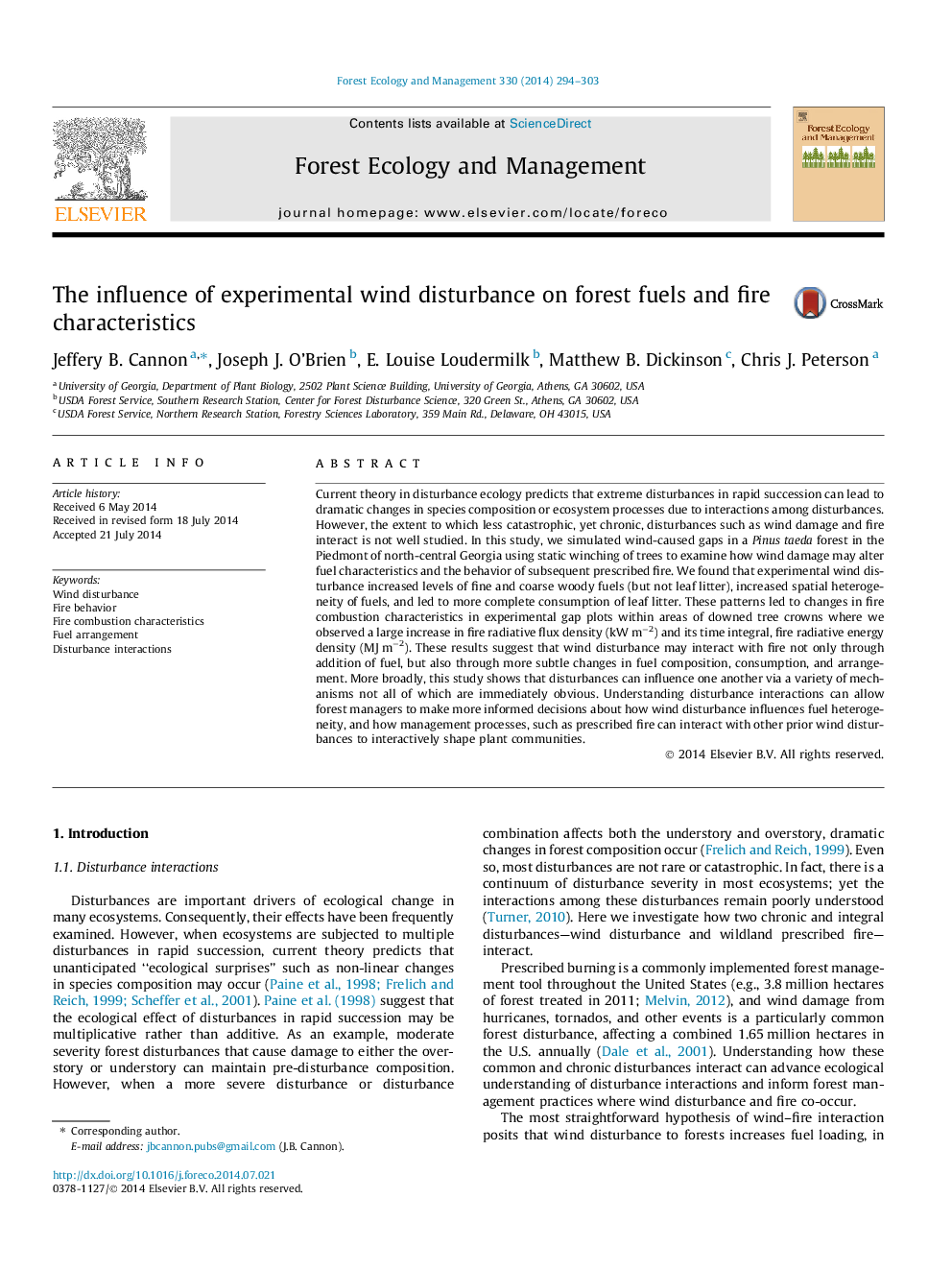| Article ID | Journal | Published Year | Pages | File Type |
|---|---|---|---|---|
| 6543380 | Forest Ecology and Management | 2014 | 10 Pages |
Abstract
Current theory in disturbance ecology predicts that extreme disturbances in rapid succession can lead to dramatic changes in species composition or ecosystem processes due to interactions among disturbances. However, the extent to which less catastrophic, yet chronic, disturbances such as wind damage and fire interact is not well studied. In this study, we simulated wind-caused gaps in a Pinus taeda forest in the Piedmont of north-central Georgia using static winching of trees to examine how wind damage may alter fuel characteristics and the behavior of subsequent prescribed fire. We found that experimental wind disturbance increased levels of fine and coarse woody fuels (but not leaf litter), increased spatial heterogeneity of fuels, and led to more complete consumption of leaf litter. These patterns led to changes in fire combustion characteristics in experimental gap plots within areas of downed tree crowns where we observed a large increase in fire radiative flux density (kWÂ mâ2) and its time integral, fire radiative energy density (MJÂ mâ2). These results suggest that wind disturbance may interact with fire not only through addition of fuel, but also through more subtle changes in fuel composition, consumption, and arrangement. More broadly, this study shows that disturbances can influence one another via a variety of mechanisms not all of which are immediately obvious. Understanding disturbance interactions can allow forest managers to make more informed decisions about how wind disturbance influences fuel heterogeneity, and how management processes, such as prescribed fire can interact with other prior wind disturbances to interactively shape plant communities.
Related Topics
Life Sciences
Agricultural and Biological Sciences
Ecology, Evolution, Behavior and Systematics
Authors
Jeffery B. Cannon, Joseph J. O'Brien, E. Louise Loudermilk, Matthew B. Dickinson, Chris J. Peterson,
